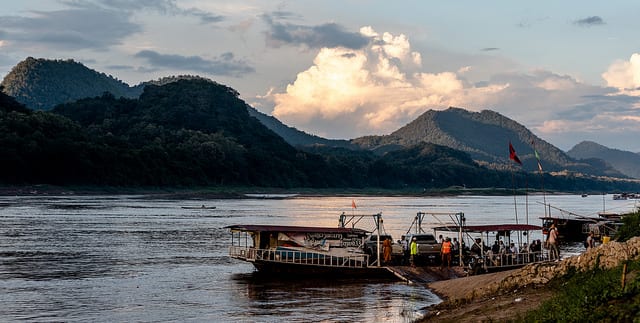 Image courtesy of WIL on Flickr
Image courtesy of WIL on Flickr
Is Hydropower the Answer for Southeast Asia?
The greater Mekong River basin is undoubtedly one of the world’s most valuable ecological resources. Fed from the melting glaciers of the Himalayas in the Tibetan Plateau of China, the Mekong River spans 2,700 miles and passes through five countries including Myanmar, Vietnam, Laos, Cambodia, and Thailand. Producing 2% of all freshwater and saltwater fish caught in the world by weight, the river is considered the Earth’s principal inland fishery. In total, the river supports the livelihoods of 60 million people.
The Mekong is ingrained in the identity of the diverse groups of people who utilize it because of the food resources and economic stability it provides. In addition to its value for livelihoods, it has often been regarded as a potential resource for hydropower dams. Eleven dams already exist on the Mekong mainstream and over one hundred are on its tributaries. Proposed dams would generate about 8% of the area’s power demands for 2030, but neighboring communities downstream have already experienced negative externalities from existing ones. Plans for another dam, Sambor, which would be the largest dam on the Mekong, has raised new concerns.
The Chinese-supported dam would be constructed in Cambodia in an ecologically sensitive area. The proposed location would prevent fish migration from Tonle Sap Lake, a key habitat for native fish to spawn. Blocking migration patterns would impede the world’s largest inland fishery from restocking itself. The Mekong River Commission reports that fish stocks are anticipated to decrease as much as 40% due to dam developments. In total, 80% of the 60 million people who support themselves from the Mekong depend on fish for protein. Diminishing fish populations would strain food security for millions, and potentially plunge communities into poverty. The dam would also block essential nutrients from reaching downstream to the delta’s rice bowl in Vietnam.
The proposed dam is not the only threat for the people who live on the Mekong River. Climate change is already impacting the source of the Mekong, the Himalayas. Melting glaciers and uncommon weather patterns often result in drought-like conditions followed by heavy floods which destroy farmlands, leaving farmers unable to provide for themselves or their community. Depleting fish populations in addition to dwindling rice yields would devastate food and economic security.
If constructed, the dam would act as a principal electricity source for Cambodia. As of 2016, the World Bank reports only half of the population has access to electricity. Cambodian citizens need electricity, and the benefits of hydropower are undisputed. A renewable energy resource that emits zero carbon emissions is a tremendous step forward for reducing human impact on climate change. But for the Sambor dam, the costs seem to outweigh the benefits. Instead of relying on strictly hydropower, Cambodia, and the other nations surrounding the Mekong, should diversify their energy resources. Wind turbines or solar panels may be a viable option in replacement of dams. A component of achieving human security should undoubtedly include both access to electricity and food security.
The consequences of climate change and the Sambor Dam will ecologically devastate the Mekong River. With the dam’s construction, fish migration patterns would be disrupted which may result in depleting populations. Essential riverbed nutrients would not reach farmers downstream leading to lower agricultural yields. While the dam would benefit the development of the region, the costs to the livelihoods of 60 million people who depend on the river as a socioeconomic resource is too high to risk. The dam would negatively impact the human security of millions, and climate change will worsen the effects.





